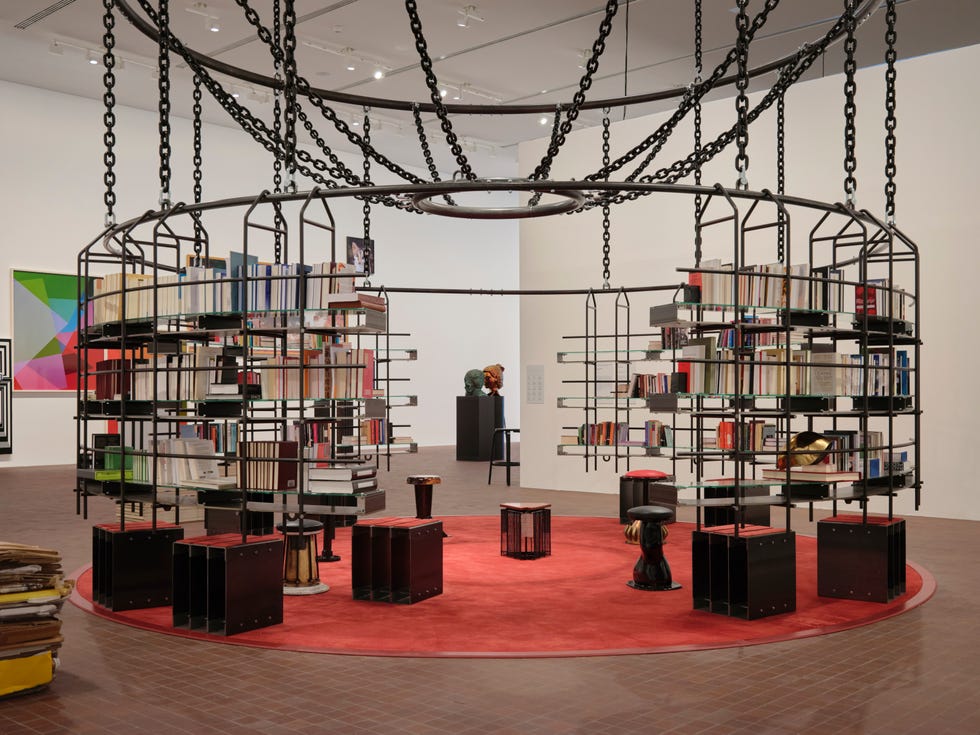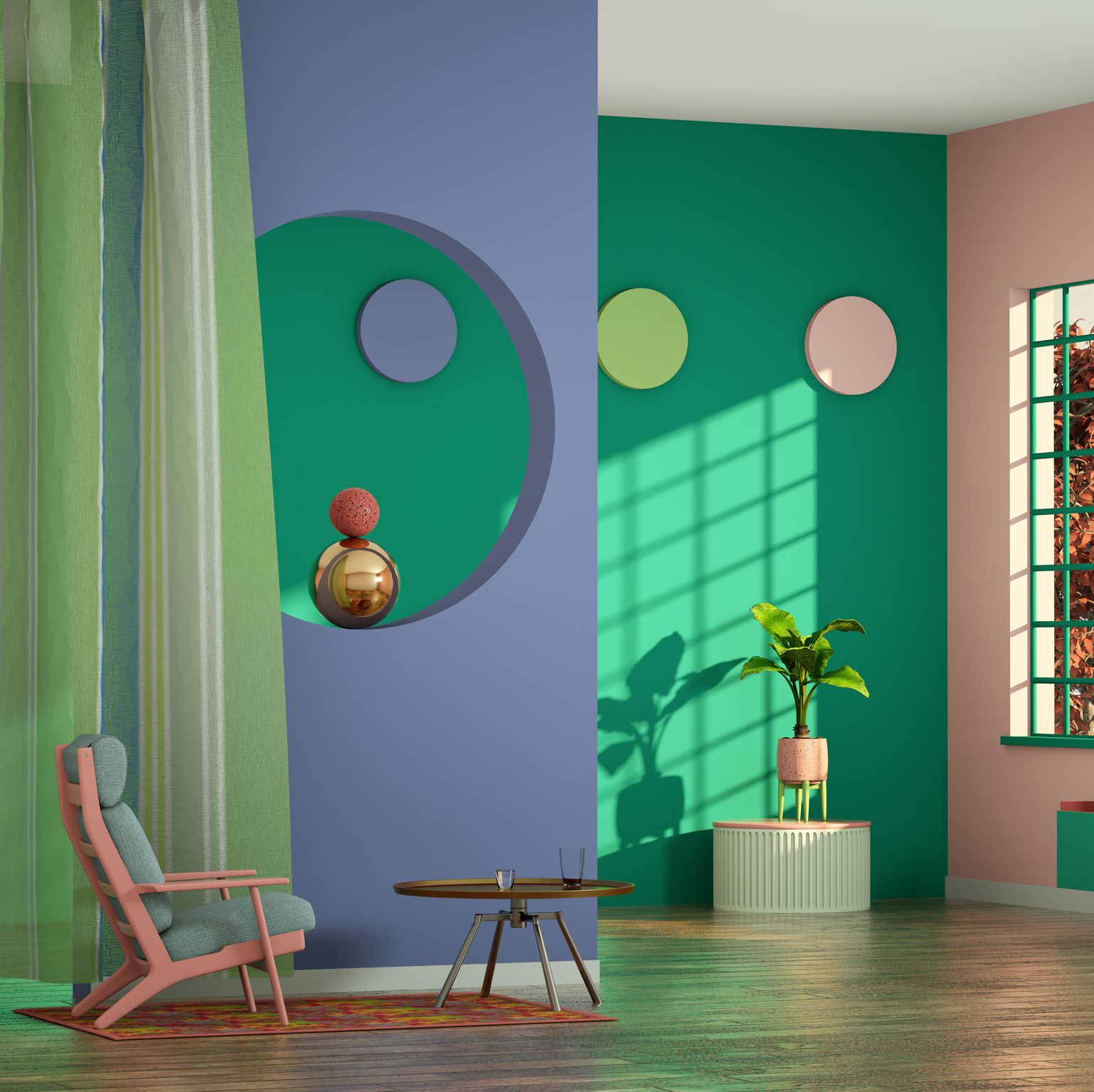Summer is finally upon us, and with it comes new ideas, formats, and furniture to fill our dreams.
Here, we’ve collected our favorite shows on view around the globe. Read on for a quick dose of culture.
Dance with Daemons at Luma Arles
Arles, France
The life cycle of fine art is often static: Works are created, displayed and sold. Rarely are they altered. Dance with Daemons at Luma Arles offers an alternative to traditional modes of art engagement, with a title that will change throughout the course of the show’s run, based on suggestions by its many participants. The exhibition brings together a wild array of mediums, with installations by Carsten Höller, Pierre Huyghe, and Philippe Parreno, to name just a few. Dozie Kanu’s room-sized work Library as Large as the World, made in collaboration with Federico Campagna, serves as a metaphor for the expansive possibility of the written word. In a circular iron and glass structure suspended from the ceiling visitors are invited to sit, rest, and consider how much of the world can fit into the human mind. Precious Okoyomon’s work the sun eats her children—a garden of beautiful, but poisonous, plants and pollinators—is equal parts threatening and transcendent. The artist’s poetic practice can be described in part as an ongoing collaboration with the earth, exploring the planets capacity for destruction and rebirth, framing the cycle of life as ultimately joyful, regardless of the death and decay it requires. In its entirety the exhibition displays the power of art without restrictions. Dance with Daemons is open through November 2. —Camille Okhio
The Shakers: A World in the Making at Vitra Design Museum
Weil am Rhein, Germany
Shakers have long been loved here in America, where the works their nimble hands made in the 19th and early 20th century still garner substantial prices at auction. This June, they’re getting their due in Europe as well, as the story of these celibate, shaking quakers travels to Germany’s Vitra Design Museum. A slight departure for the museum, which generally focuses on 20th century material, the exhibition will offer visitors an introduction to the honest woodworkers and weavers of 18th and 19th century Shaker communities, starting from what was their center: their chosen form of worship. Background is offered not just on their religious practices but also on their way of life, their craft traditions, and their political beliefs. The show reintroduces Shakers as the radically inclusive American fluke that they were and explores their enduring legacy. Historic examples of their furniture and objects sit alongside commissions by seven contemporary artists and designers created in response to the Shaker’s ethos. Installation design by FormaFantasma works as an exoskeleton, holding the different sections of the show together. The exhibition is on view through September 28 at Vitra Design Museum, after which it will travel to the Institute of Contemporary Art in Philadelphia in January 2026 and the Milwaukee Museum of Art in September 2026. —C.O.
FormaFantasma at Friedman Benda
New York, New York
Freewheeling design studio FormaFantasma has garnered attention and acclaim in Europe with their ecological interventions, research-heavy installations, and a practice that philosophizes as it builds. On June 6th, their first gallery show in the United States, Formation, will open at Friedman Benda. One material and many ideas make up the basis of the exhibition. The starting point for each work on view is as simple as can be—a cherry wood plank. Referencing the ideologies of American master craftsmen like George Nakashima and Frank Lloyd Wright, the duo behind FormaFantasma, Andrea Trimarchi and Simone Farresin, explore their own version of American modernism. For designers whose work relies so heavily on theory and archival work, their furniture is decidedly unburdened by the visual clutter that usually accompanies complicated ideas. A similar spirit to the Shaker’s essentialist approach to furniture can be seen in FormaFantasma’s sleek, simple lamps, tables, and chairs, which incorporate fabric, aluminum, and steel, alongside wood. The show will run through August 1. —C.O.
I Remembered to Forget at Liaigre
New York, New York
Stepping into Liaigre’s Madison Avenue showroom this season is like slipping into a quietly surreal dreamscape. I Remembered to Forget, the latest solo exhibition by New York-based artist Rob Wynne, unfolds with a lyrical cadence that blurs the boundaries between art and interior, sculpture and text. Curated by Liaigre’s in-house curator Carlos Sicilia in collaboration with Galerie Mitterrand, Wynne’s molten glass phrases that look as though they are suspended in air, punctuate Liaigre’s restrained interiors. Wynne’s pieces possess an enduring quietude, but with a flicker of provocation. The exhibition, running through October 10, makes a strong case for narrative as a tactile experience—and Liaigre, in turn, proves itself a sublime stage for art that refuses to sit still. —Benjamin Reynaert
A Lively Mind: Jane Austen at 250 at the Morgan Library
New York, New York
Most of us at some point have held a flame for Mr. Darcy. With the Morgan Library’s new exhibition A Lively Mind: Jane Austen at 250, we’re invited to hold a flame for the authoress herself. Placed among rare, early manuscripts that reveal the labor behind the apparent ease of her words are small, resonant tokens from her personal life. Letters from Austen to her friends and family revealing the light-hearted, hilarity of her character are displayed near depictions of those same loved ones. Late 18th and early 19th-century fashion plates she might have referenced show us her preferred colors, trimmings, and silhouettes. Her precious turquoise ring (made between 1760 and 1780) show she was a follower of certain trends, as this particular hue of turquoise was a big favorite of the period, as well as a sentimentalist (turquoise is her birthstone). Portraits of Austen show us a pretty, gentle woman with eyes that betray a vivacity that helped carry her name several centuries into the future. Viewers are given a glimpse into how she approached self-presentation, how she processed her rapid rise to fame, and how she moved through the world as a person, not just a storyteller. This rare glimpse into her rich interior world allows viewers to consider Austen as an even more fascinating and complex figure than her characters. Our own Rachel Silva goes into more details in her review, but suffice to say, an hour with A Lively Mind will do wonders for your own. —C.O.





![Miniature portrait of Jane Austen (1775-1817) [painting].England, between 1870 and 1900, Anonymous, British School, 19th cent. AZ078 jane usten](https://hips.hearstapps.com/hmg-prod/images/miniature-portrait-signature-image-6840ab5eac2a6.jpg?resize=980:*)

